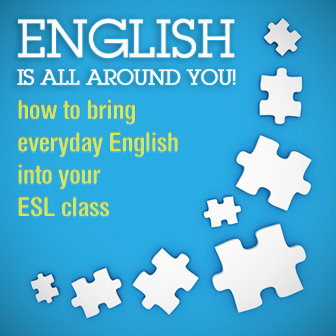Teaching in Japan: 5 Common Student Mistakes


In the fields of international business and technology, English is the language that most people are expected to handle. From technological gadgets to famous name brands, catch phrases to song lyrics, English has permeated every society in the world today to such extent that most of the world’s population will probably come across words or names in English on a daily basis. So let’s use this everyday English to our advantage!

An anglicism, simply put, is an English word borrowed by another language. It is more common in some areas or industries as is the case with business (marketing, cash, holding) and entertainment (reality show, thriller, backstage), for example. Each language has its own particular anglicisms, and the words often change from country to country, even if they speak the same language. This is often the case with Spanish-speaking countries – some may use the English word “bacon”, for example, while others prefer the equivalent in Spanish (panceta or tocino). For the purposes of this article, I can’t provide a complete list of anglicisms, but I can mention some of the most common throughout the world.

Be sure to research and use the words in English that are most often used in the country where you teach. Also beware of pseudo-anglicisms. This is when an English word is borrowed but used differently from its original meaning. For example, in some Latin American countries the word “fashion” is used as an adjective to mean “stylish” or “cool”: You are so “fashion”. But fashion is not an adjective in English! It is very important to make this distinction with your students and show them how some words in English have been deformed or their meaning changed.

Ask students to go around town and find signs, posters, billboards, etc…with words in English. Ask them to take a photo of the sign with their cell phone or camera. With younger students or those who don’t have phones, ask them to find at least one example and copy it on a piece of paper. They must also make a note of where they saw this: was it an ad or a store window?
In class, students share their photos or drawings. Students must look closely at the examples and determine:


A great variation to the activity above is for you to present snapshots of signs/posters that have words in English in them. Ask students to guess where the photo was taken. Ask them to describe the context. 

Ask students to brainstorm words in English they may come across on a daily basis. Turn it into a game by giving them a category and seeing which team comes up with more. For example, call out “musical bands”: each team may come up with names like Pet Shop Boys, The Doors or Green Day. The only rule is that the name has to have words in English. If both teams write down the same item, each team gets 5 points, but if there is an item that only one of the teams came up with, then that team gets 20 points.
Similar to the first activity, in this case, students must find words in English in newspapers or magazines in their native language. Once they are done searching, students come together and discuss why a particular English word was used and not the equivalent in their native language.
Sometimes entire phrases in English become so popular, they are used all over the world and are easily recognized.These are usually movie quotes or parts of song lyrics. This is English content that often surrounds students on a daily basis, which at some point they learn to recognize. Pick some very popular phrases and ask students to identify who said it or where it is originally from. Here are some good options for movie quotes:
Choose movie quotes that are more appropriate to your students’ ages (young students may not be familiar with Clint Eastwood or The Wizard of OZ).
There are fun ways to make use of the English they know, but may not be aware that they already know.
Have you ever discussed with your students the use of English words in their native language? Share below!